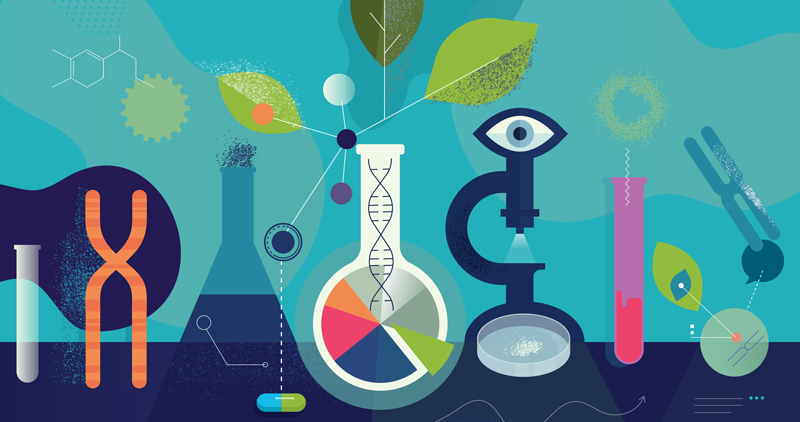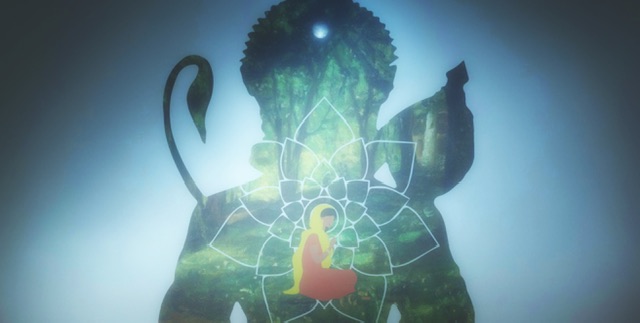Religion and science go hand-in-hand; they are the two windows we look out of to understand and steer life towards a purpose. Pitching them against each other does no good, either to us as individuals or to the future of the human race.
Most of the modern day scientific discoveries are only re-discoveries of ancient systems of knowledge. Vedic academic activities and the ancient scientific advancements were so interrelated that many Vedic scriptures are also ancient scientific manuals and vice versa, the science of clairvoyance and sound, for instance.
Let me explain the science. As a student of journalism (broadcast and radio), I don’t just hear sound in a studio but also ‘see’ it—in the form of waves. The ‘visibility of sound’ is a fact, known not just to broadcasters, but also to doctors, scientists and engineers.
Ultrasounds create images of our hearts and stomachs, sonar systems are examples of how sound translates into figures and mechanical devices of radar send sound signals via radio waves. The visibility of sound is the very basis of the science of clairvoyance which has come to us from the Vedas, the ancient Indian texts. According to this science, each cell of the body vibrates at a certain frequency. This vibration becomes apparent to a clairvoyant in the form of colour/light.
Biologist Lyall Watson wrote in his book, The Romeo Error (Watson 1976), about clairaudience and clairvoyance: “There are people with special talents who hear sounds that are supersonic, or see wavelengths that would normally be invisible. It may be possible for all of us to practice such sensitivity.”
Clairvoyance involves the reading of the frequency of a cell by the colour. While dark colours signify gross energy, soft shades stand for light energy; the lighter the colours, the healthier the person. Thus, in one look, a clairvoyant can accurately diagnose the ailment. The converse logic of this science can be used to heal. Since sound eventually translates into energy, the right sound can change the colour/energy pattern of a person—from dark to light or from ill-health to good health. This is the rational basis of the healing power of mantras. The generous use of colours white and blue in the clothes of medical staff, beddings of patients and paint on the walls of modern hospitals is also explained by the healing energy of these colours. But even while practicing it and benefitting by it, doctors do not recognise colour therapy as a science.
Swami Vivekananda in a lecture 115 years ago at Lahore (part of undivided India before 1947 and now in Pakistan), said: “Today we find wonderful discoveries of modern science coming upon us like bolts from the blue, opening our eyes to marvels we never dreamt of. But many of these are only re-discoveries of what had been found ages ago. It was only the other day that modern science discovered that what it calls heat, magnetism, electricity, and so forth, are all convertible into one-unit force. But this has been done even in the Samhita (collection of metric texts in the form of Vedas).”
Science and religion are not antagonistic or you would not have scientists going to church and mathematicians telling us not to “gun for God”. A survey done by the American Association for the Advancement of Science (AAAS) found out that many Americans believe religion and science can work together and that they should not be battling each other. The study found that 18 per cent of scientists attend weekly religious services, which is just below the 20 per cent of general Americans who check into church. Almost 15 per cent of the scientists, according to the survey, considered themselves religious. The study included 10,000 people, 25-minute-long online interviews with them and 300 personal interviews.
Writing a blog in the Scientific American, ‘Can Faith and Science Co-exist?’, mathematician and scientist John Lennox wrote some fascinating things about how faith gives hope, direction, purpose and a sense of right and wrong to human life. The existence of evil and pain, he said, posed the hardest problems before a person of faith. But they lead to God, not away from him. “Getting rid of God does not get rid of suffering. In fact, it can make the pain worse since it gets rid of all ultimate hope and justice.”
“At the heart of Christianity is that Jesus Christ is God incarnate, which raises the question, what is God doing on a cross? At the very least that shows me that God has not distanced himself from human suffering but has become part of it.” The cross, Lennox says, also speaks of a place where one can ask for forgiveness and a new life by remembering the people who died and repenting for our sins and nothing in this world offers such a simple and radical solution to the problems of humans.
“If we rise from the dead there is hope for a future judgement. This is a marvelous hope because it means our conscience is not mere illusion, and those who terrorise, abuse, exploit, defame and cause untold suffering, will not get away with it. Atheism has no such hope. For it, ultimate justice is an illusion.” (Lennox 2015)
People of faith and science both share an awe of God and there is no dearth of examples of scientists’ attraction towards God. Albert Einstein, for instance, had this to say when he was asked about his belief in God: “The human mind, no matter how highly trained, is limited. We are in the position of a little child entering a huge library whose walls are covered to the ceiling with books in many different tongues. The child knows that someone must have written those books. It does not know how or who. It does not understand the languages in which they are written. The child notes a definite plan in the arrangement of the books, a mysterious order, which it does not comprehend, but only dimly suspects. That, it seems, to me is the attitude of the human mind, even the greatest and most cultured, towards God. We cannot grasp the universe. We see a universe marvellously arranged obeying certain laws, but we understand the laws only dimly. Our limited minds cannot grasp the mysterious force that sways the constellations.” (Einstein 1949)
In George Sylvester Viereck’s book, Glimpses of the Great (1930) American evangelist Kent Hovind expressed almost the same sentiment when asked where God came from. He said that the God he worships is not limited by the bonding of time, matter and space. If he could manage to comprehend the infinity of God in his brain, then that cannot be God and would certainly not be worth worshipping.
In conclusion, I would give the following example to show the meeting point between science and faith: The faithful Hindus fast on fixed days. They do so driven by their religious beliefs. They neither know nor care to know the scientific benefits of fasting: detoxification, decongesting and de-stressing of the mind and body. But the impact of fasting on mind and body, whether recommended by the doctor or driven by faith, turns out to be the same.





